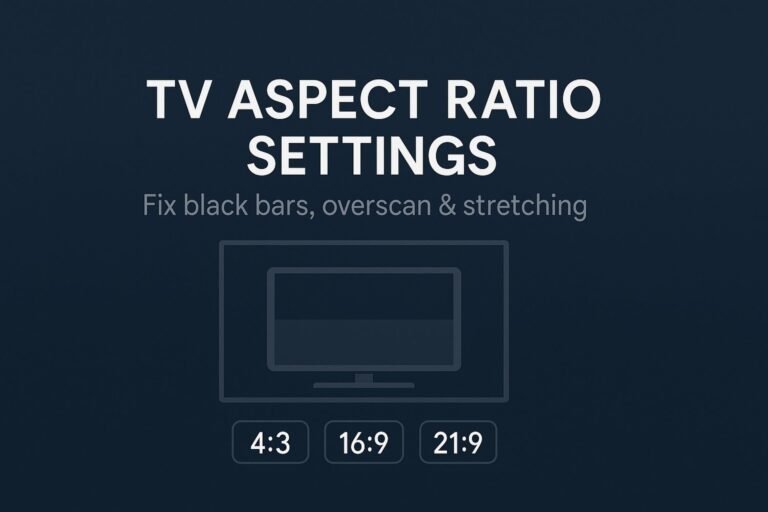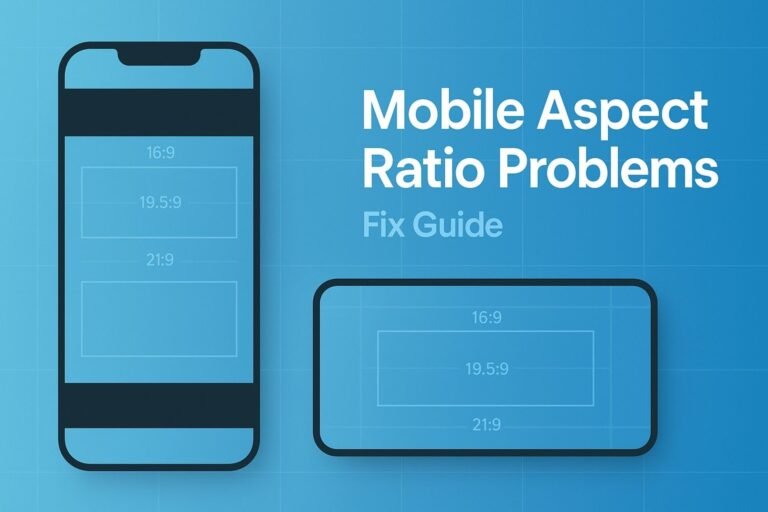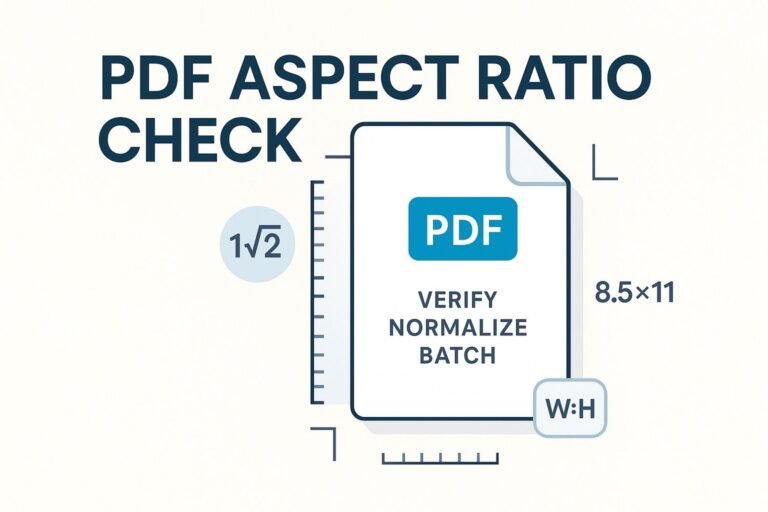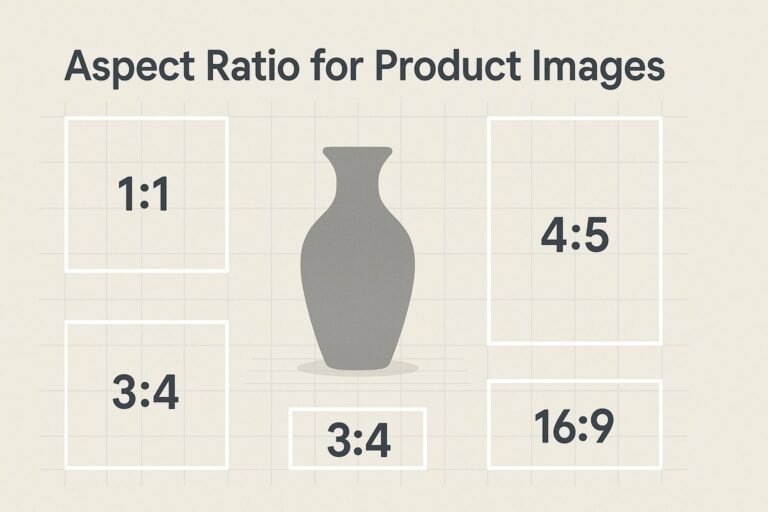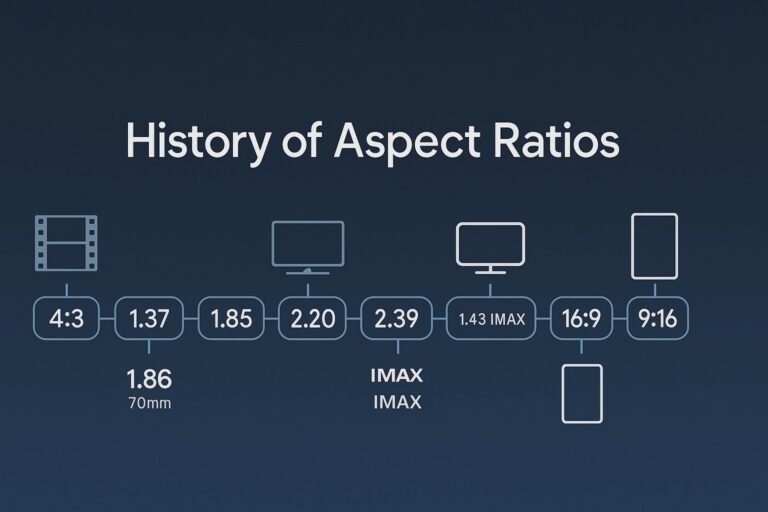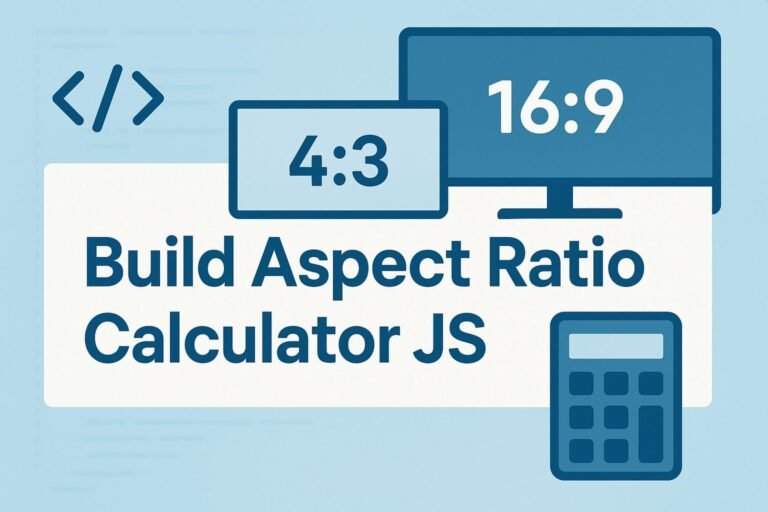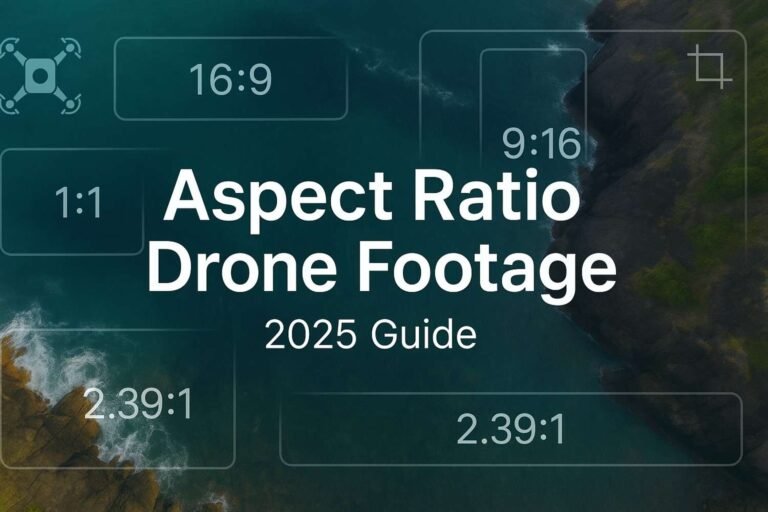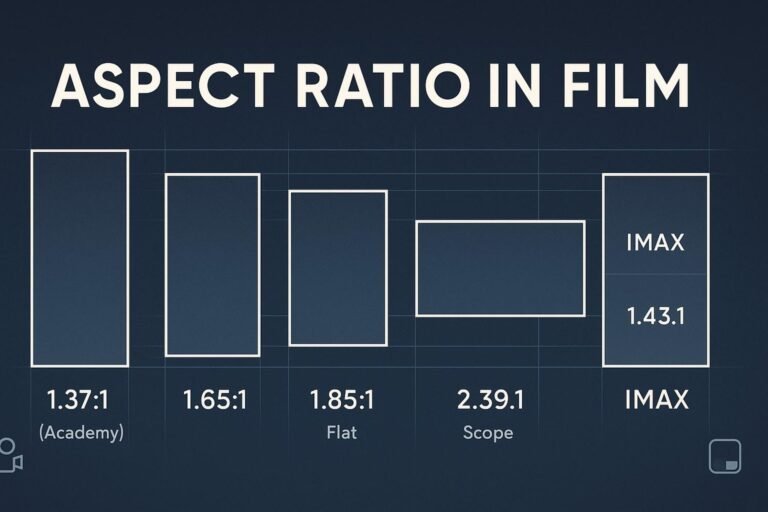Seeing black bars, stretched faces, or scoreboards cut off? This guide shows you the exact TV aspect ratio settings to use for streaming, live TV, Blu-ray, gaming (PS5/Xbox/Switch), and PC. You’ll also learn how to turn off overscan, why bars appear (and when that’s correct), and how to verify perfect geometry with a quick test.
Quick Answer: Best TV Aspect Ratio Settings
- TV Picture Size/Aspect: 16:9 (or Original/Auto if it preserves the source shape correctly).
- Overscan: Off (names vary: Just Scan, Fit to Screen, Full Pixel, 1:1).
- Source device output: 1080p or 2160p (4K). Avoid any device-level Zoom/Stretch.
- Movies with bars: Leave them. They preserve the director’s intended aspect ratio.
- Gaming: Use Game Mode, aspect 16:9, overscan off.
- PC: Use 1:1 pixel mapping (often automatic when input is labeled PC), with 4:4:4 chroma for crisp text.
Aspect Ratio Basics (Why Bars Happen)
Aspect ratio is the picture’s shape: width:height. The most common are 4:3 (classic TV), 16:9 (modern HDTVs), and wider cinema formats like 2.39:1. When the content’s shape doesn’t match your screen’s shape, your TV must either fit (show everything, sometimes with bars) or fill (crop or stretch).
- Letterboxing = horizontal bars (wide movies on 16:9 TVs).
- Pillarboxing = vertical bars (4:3 content on 16:9 TVs).
- Stretch/Zoom = distorts or crops—avoid for accuracy and clarity.
60-Second Fix Checklist
- Set TV Picture Size/Aspect to 16:9 (or Original/Auto if geometry stays correct).
- Disable overscan (e.g., Just Scan, Fit to Screen, Full Pixel, 1:1).
- On cable/streamer/console/PC, set output to 1080p or 2160p; turn off any Zoom/Stretch modes.
- Circles look oval or text looks soft? You’re stretching or scaling—revert to Original and 1:1 mapping.
- Run a test pattern (see Calibration) to confirm no edges are clipped.
Best TV Aspect Ratio Settings by Source
| Source | TV Setting | Device Setting | Notes |
|---|---|---|---|
| Live TV (cable/satellite/antenna) | 16:9 / Original; overscan off | 1080i/1080p/2160p; no stretch/zoom | Older SD 4:3 channels show vertical bars—this is correct. |
| Streaming sticks/boxes (Roku, Fire TV, Apple TV, Chromecast) | 16:9 / Screen Fit / Just Scan | Match TV resolution (1080p/4K), disable zoom | Wider films (2.39:1) will have horizontal bars—leave them. |
| Blu-ray / 4K UHD | 16:9 (no zoom) | Player at 1080p or 2160p | Let the disc’s native aspect ratio display untouched. |
| Gaming (PS5 / Xbox / Switch) | Game Mode; 16:9; overscan off | Console at TV’s native resolution | Use built-in “Adjust Display Area/Calibrate” tools for HUD edges. |
| PC / Laptop via HDMI | Original/Just Scan; label input PC | GPU set to native res & 60/120Hz; 4:4:4 chroma | Ensure 1:1 pixel mapping for razor-sharp text. |
Turn Off Overscan (Stop Cutting Off the Edges)
Overscan slightly enlarges the picture, chopping off borders (logos, tickers, game HUDs). It’s a holdover from analog TV and should be disabled for modern digital sources.
Look for any of the following and turn it on if it means “show everything”: Just Scan (LG), Fit to Screen / Screen Fit (Samsung), Full Pixel / Display Area: Full Pixel (Sony), 1:1 / Native / Original (various).
Brand-by-Brand Menu Paths (Typical)
- Samsung: Settings → Picture → Picture Size = 16:9; Fit to Screen = On.
- LG: Settings → Picture → Aspect Ratio Settings → Just Scan = On (or Original).
- Sony: Settings → Screen/Display → Display Area = Full Pixel; Wide Mode = Full/Normal.
- TCL / Roku TV: Settings → TV inputs → [HDMI] → Picture size / Advanced picture → Normal/Direct; avoid Stretch/Zoom.
- Vizio: Menu → Picture → More Picture → Size & Position / Picture Size = Normal (1:1).
- Hisense: Settings → Picture → Aspect = Auto/16:9; turn Overscan Off.
- Panasonic: Picture → 16:9 Overscan Off; Aspect = 16:9 or Just.
- Philips: Settings → Picture → Advanced → Picture Format = Original/Unscaled.
Note: Names differ slightly by year and model. If you can’t find the exact labels above, look for synonyms like Screen Fit, Just, Native, or 1:1.
Consoles & PC: Perfect Geometry and Sharp Text
PlayStation & Xbox
- Set resolution to your TV’s native (1080p or 2160p/4K).
- Run the console’s display calibration (e.g., “Adjust Display Area”) so HUDs sit within the screen edges.
- Enable the TV’s Game Mode; keep aspect 16:9; overscan off.
Nintendo Switch
- Set TV Resolution to 1080p (or use dock upscaling if supported).
- Use the Switch’s screen size adjuster to ensure edges are fully visible.
Windows / macOS
- Match the TV’s native resolution and refresh rate (60Hz or 120Hz on capable sets).
- In NVIDIA/AMD/Intel control panel, prefer display (not GPU) scaling and 1:1 pixel mapping.
- For crisp text, ensure 4:4:4 chroma and label the HDMI input as PC if your TV supports it.
Streaming Apps: When Bars Are Correct
Many films are wider than 16:9 (e.g., 2.39:1). On a 16:9 TV, you’ll see horizontal black bars—that’s accurate and preserves all the detail. Don’t use Zoom/Stretch to remove them; you’ll lose image information and clarity. Vertical bars are normal on 4:3 classics.
Fast Calibration & Test Pattern Tips
- Open a test image showing circles in the center and border markers at the edges.
- Circles should look perfectly round; if they’re oval, a stretch mode is active.
- All edge markers should be visible; if not, disable overscan and re-check.
- Verify sharpness using fine text—blurriness often means scaling or chroma isn’t correct.
Troubleshooting Matrix
| Symptom | Likely Cause | Fix |
|---|---|---|
| Edges cut off (scoreboard cropped) | Overscan on | Enable Just Scan/Fit to Screen/Full Pixel |
| Faces look wide or tall | Stretch/Zoom mode | Switch to Original/Normal/16:9; turn off device-level zoom |
| Black bars on movies | Wider-than-16:9 film | Leave bars; they’re correct. Avoid Zoom/Stretch |
| Soft, smeared text (PC) | No 1:1 mapping or wrong chroma | Label input PC, ensure 4:4:4, use native res/refresh |
| Game HUD outside safe area | Console/TV not calibrated; overscan | Run console “Adjust Display Area”; disable overscan |
FAQ
What is the best TV aspect ratio setting?
16:9 (or Original/Auto if it preserves the source shape) with overscan off. This combo shows the full image without distortion.
How do I get rid of black bars?
Most bars are correct (wider movies or old 4:3 shows). Removing them requires stretching or cropping, which hurts quality. Keep Original and avoid Zoom.
Why is my TV cutting off the edges?
That’s overscan. Turn on Just Scan/Fit to Screen/Full Pixel (names vary) to display the entire frame.
Should I use Auto aspect?
Use Auto if it accurately preserves the source shape. If it stretches or crops, switch to Original/16:9 and disable overscan.
What’s the best setting for sports?
16:9, overscan off, no Zoom. This keeps score tickers and graphics fully visible and correctly shaped.
Is a 21:9 TV better for films?
21:9 matches many movies, but most TV shows, sports, and UI are 16:9. For mixed viewing, a 16:9 TV is more practical.
Mini-Glossary
- Letterboxing: Horizontal bars when video is wider than the screen.
- Pillarboxing: Vertical bars when video is narrower than the screen.
- Overscan: The TV zooms in slightly and trims edges (turn it off).
- 1:1 Pixel Mapping: Each input pixel maps to a screen pixel (sharpest result).

